

|


|
Tamiya Manta Ray - 58087
|
Released by Tamiya on October 23, 1990, the Manta Ray, in my humble opinion, was by far the most important and successful RC Model ever made by Tamiya.
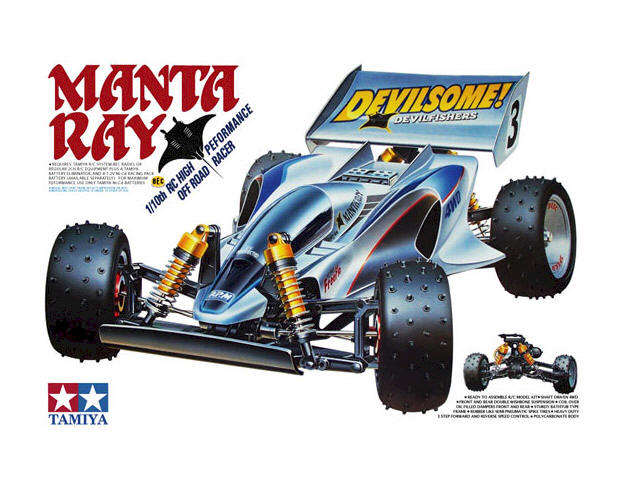
What made the design so special were the innovatively designed front and rear gearboxes that went on to spawn a generation of also successful children, including the TA-01 and TA-02 variants of Touring Cars.
In my local club at one point in the early 1990s, 75% of the cars raced were Manta Ray's.
The Manta Ray chassis, later designated the DF-01 was the perfect car for beginners and with a few simple tweaks and in the right hands, could beat any 1:10 Scale buggy available at the time.
The car wasn't without its problems. If the motor mount was allowed to work loose, the pinion gear would chew up the spur gear in seconds, so you soon learned to check it after every race. Or, if you could afford it, replace it with an alloy motor mount that a local model maker made for us - that guy was brilliant.
Another problem I discovered to my cost was the nylon bush type bearings. After a few weeks running these I managed to scrape together enough pocket money for a set of Ball Bearings. However, when I came to fit them I found they were sloppy on the shafts - grit and dust in the nylon bushes had actually worn into the metal - meaning I had to buy replacement shafts. So, if you intend to race the Manta Ray seriously, get a full set of ball bearings before you start to build the car.
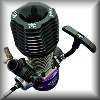
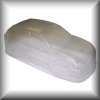
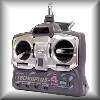
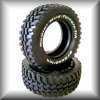
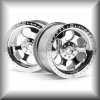
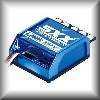
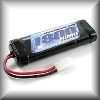
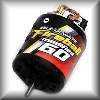
|
|
|

|
|
Tamiya Manta Ray #58087 - Chassis
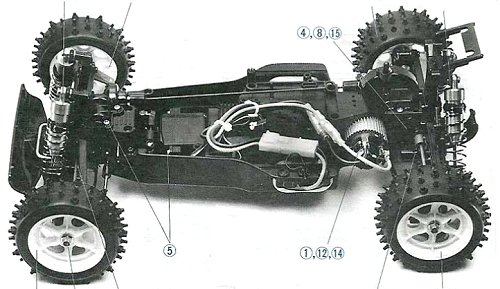 |
|
Tamiya Manta Ray #58087
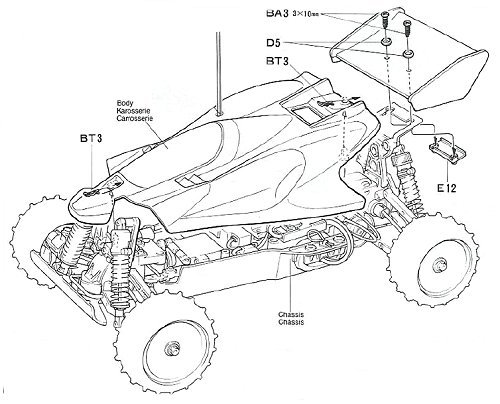 |
Buying a Used Tamiya Manta Ray
|
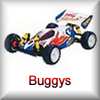
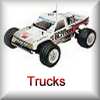

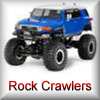
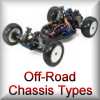

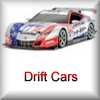


|

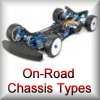

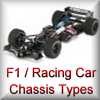

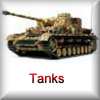
|
|
|
|
Hints, Tips and Information
Dampers
Dampers, Shock Absorbers, Shocks - call them what you will, they are one of the least understood, but most important tools you have for adjusting the handling characteristics of your RC model.
So how do Dampers work?
Basically what you have is a small amount of silicone oil contained in a sealed cylinder. Through the centre of that cylinder is a metal rod, and on the end of that rod, a piston with a number of small holes in it. Pulling, or pushing the rod in and out of the cylinder, your will notice a certain amount of resistance as the oil is forced through the holes in the piston. |
|
Hints, Tips and Information
My First National
When I first started in RC, way back in the late 1980s, I would turn up to the weekly club meeting, with my Tamiya Boomerang, Acoms transmitter, two sets of crystals, a couple of 7.2v batteries, a charger and a tool box with a wheel spanner and a few spares. |
|
RC Models:
|
Radio & Motors: |
Other
Accessories: |